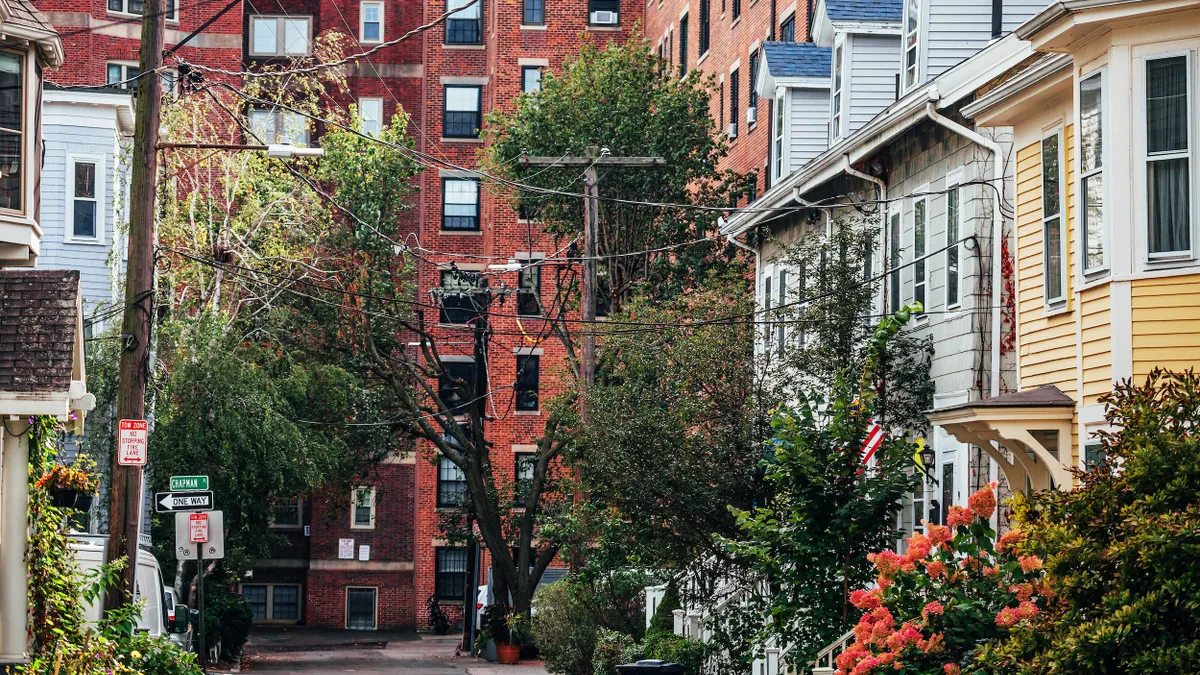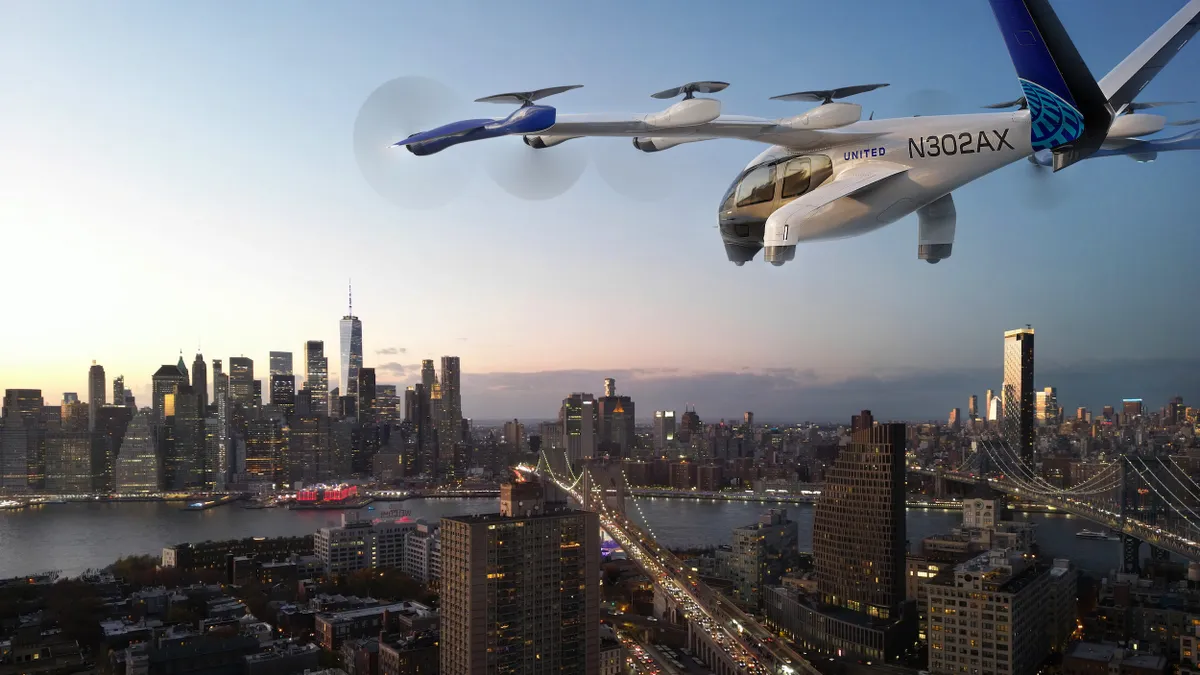Seven years ago, Washington, D.C.'s CapitalBikeshare broke ground as the first official bike-share system to launch in the United States, and since then similar systems have quickly rolled into dozens of U.S. cities.
This year the bike-share space has become a bit more crowded as new, dockless bike companies have entered the U.S. scene. Mobility advocates are now closely watching D.C. to see if multiple bike-share systems in one city can thrive — and perhaps even complement each other.
D.C.'s bike-sharing was spurred by SmartBike, a pilot program with 10 stations and 120 bicycles. It was replaced in 2010 with CapitalBikeshare, which is a municipally-owned and operated program, similar to the public-private partnership bike-shares in New York (Citi Bike) and Chicago (Divvy). But recently, five new bike systems moved into D.C., threatening CapitalBikeshare's reign on the city.
LimeBike, Mobike, Spin, Ofo and electric bike operator Jump are now available as part of a six- to seven-month "demonstration program" for dockless bikes. All are owned and operated by private companies, although the District Department of Transportation (DDOT), which oversees CapitalBikeshare, must issue the companies' permits for operating in the public space — which can be a major challenge for the private operators. Because the agreements consider operators' entry into the market a pilot program, they limit the number of bikes each operator can have on the streets.
"With a city of more than a million people moving in and out of it, this is a hard conversation to have," said Maggie Gendron, LimeBike director of strategic development. "To really understand what the market would be able to handle, you would have to be able to saturate it with the amount of bikes it could support ... [D.C.] could easily support 15,000 to 20,000 bikes ... Even with five operators at 400 bikes a piece, that’s only an additional 2,000," on top of the 4,000 that CapitalBikeshare owns.
But that limit is all part of how pilot programs help to determine long-term approaches and potential expansions, according to DDOT.
"We wanted to give operators an opportunity to introduce their products to the market and felt 400 was a reasonable number to begin with. At the outset, we did not know the number of operators who would be interested in the District or how operations would run," said Kim Lucas, DDOT CapitalBikeshare coordinator. "During the demonstration period we will be evaluating data from operators and public feedback to figure out whether the 400 bike threshold is appropriate."
'It might be a really reciprocal relationship'
An influx of new options might initially seem troublesome — especially with all of them arriving around the same time – but DDOT views them as complementary to CapitalBikeshare.
"Adding more bikes on the streets and making more bikes available to residents and visitors to the District, we hope will increase the number of people who are choosing bikes as a way to get around our congested city," Lucas said. "Maybe people who haven't tried CapitalBikeshare but tried one of these new companies, that might lead them to try CapitalBikeshare. It might be a really reciprocal relationship."
LimeBike also doesn't have a problem with so many competitors receiving permits and arriving at once.
"That's the way you’re going to have a permit process set up," Gendron said. "If a city says, 'Everybody can come into this market, here’s a permit and please agree to the permit and its boundaries, then you can operate here,' it makes sense."
The slightly different nature of traditional and dockless systems is one of the reasons the two types of services could work well together. "If someone is trying to reach a destination where we don't yet have a CapitalBikeshare station … then one of these dockless bikes might be available to them," Lucas said. "And if a person needs to find a bike to start a trip and wants to have the best opportunity to find one available, then finding a [docking] station ... is going to be easier than if you're looking for one or two bikes that might be in the neighborhood."
Nationwide challenges
Despite the typical model of having one bike-share service per city, more cities like D.C. are opting to hand out permits to multiple operators. Seattle had a municipally-run bike-share program, but it folded earlier this year. Over the summer it granted pilot program permits to some of the same bike-share businesses entering the D.C. scene, and the pilot's success has allowed the operators to expand the number of bikes on the streets. New York City's privately-operated Citi Bike also found itself with dockless competition this year.
Not all cities have an easy time adding multiple bike-share services. San Francisco is experiencing pushback about issuing permits to new operators amid a battle over apparent exclusivity rights in its contract with Ford GoBike. New York also has experienced challenges with permitting, leading some to accuse it — and other municipally-overseen bike-shares — of being a monopoly.
Bike-share companies have rapidly expanded nationwide this year, but they don't just randomly pick an area and drop a bunch of bikes. They strategically choose bike-friendly cities and college campuses where such programs have a higher likelihood of succeeding. For example, D.C.'s influx of bike-share services last month happened just as the U.S. Census Bureau released its annual American Community Survey, which showed that bike commuting has increased in the District, bucking a nationwide trend in the opposite direction.
"Part of why we look at particular communities ... is people want us there. But also, they have the infrastructure and the ability to have ridership," Gendron said. She noted that D.C. is supportive of many mobility options, including bike-sharing. "There are so many [D.C.-area] communities within one mile of a bus stop, within one mile of a metro station ... Our goal is to really close that one-mile gap in transportation. We’re trying to relieve congestion for cities."
The question remains about how many of those bike-sharing options can survive in one space. "I think this is why D.C. is doing a six-month pilot project," Gendron said. "To see at the end of this process ... who is most likely to stay? I think that comes back to your ground operations, your responsiveness, your customer service."
The tipping point
Adding a bike-share system — and especially multiple systems — can be a big change for a community. And with change, some hesitance from community members naturally follows. But municipal and private operators agree that the overall goal of adding bike-share services is to provide a positive experience for residents while increasing their mobility options.
“[DDOT’s] mission is to get more people out there actively transporting themselves. That means biking, that means walking, that even means taking public transportation that are not bikes," Lucas said. "We love having as many good options [as possible] available to our residents and visitors ... We really think that having more [bike-sharing options] is going to be great."
"There's no one solution to mobility in urban centers, but we are now going to be a part of it," Gendron said. "I think we’re really at a tipping point right now in the U.S., where we will see bike ridership increase and we will see a change in how people move around their cities. I think it's a good time for people who love bikes and using bikes as an option to move around."




















